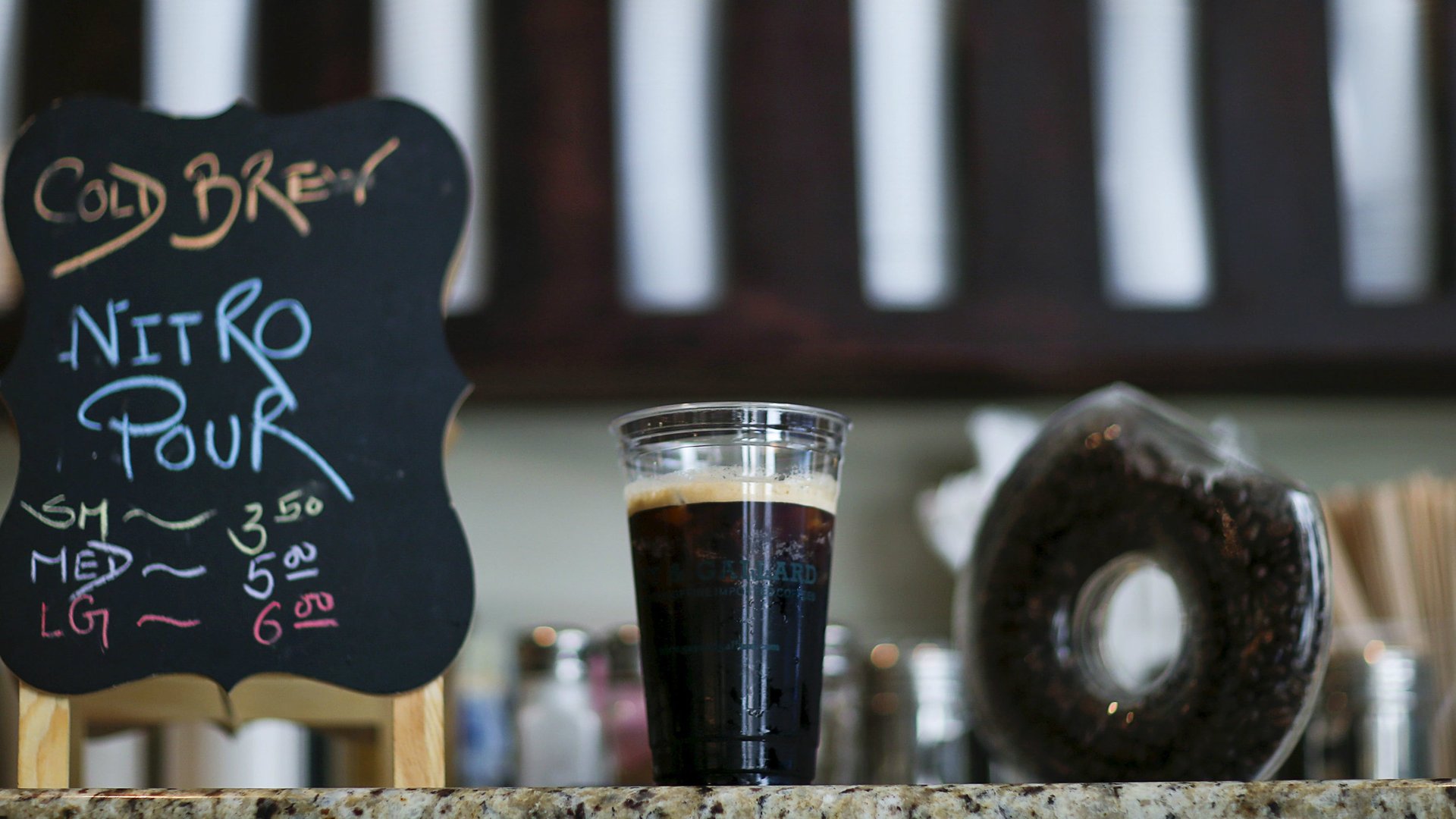Starbucks wants to sell a lot more cold brew. This is why it can’t do so fast enough.
Cold brew—which is steeped for 20 hours and infused with nitrogen, then poured from a spigot into a glass—has a smooth feel and Guinness-like bubbles. That’s made it popular with coffee snobs and with chains like Starbucks, which has developed different flavors, including spiced vanilla sweet cream, and can charge more for them.


Cold brew—which is steeped for 20 hours and infused with nitrogen, then poured from a spigot into a glass—has a smooth feel and Guinness-like bubbles. That’s made it popular with coffee snobs and with chains like Starbucks, which has developed different flavors, including spiced vanilla sweet cream, and can charge more for them.
Since Starbucks introduced cold-brew coffee to its menu in 2015, sales of it have increased by 25% every year since, according to Forbes. Starbucks now plans to expand cold brew from about 600 US locations to 1,400 by the end of 2017. There’s just one obstacle: the equipment takes up a lot of space.
While the drink is typically stored in a keg behind store counters, all the special equipment used for making the drink can only slowly be rolled out to US locations due to space constraints, according to Bloomberg. The space issue has become increasingly problematic for established restaurant chains as they attempt to keep pace with competitors and changing consumer tastes. At McDonald’s, for instance, offering fresh beef patties at its locations has become a burden on the established kitchen assembly line, an issue that can be remedied in many instances if room is found for more grill space.
The success of cold brew speaks not just to a cultural fascination with that particular style, but to cold drinks, in general. Sales of iced beverages are growing faster than sales of hot beverages at Starbucks these days. Iced tea now represents more than 10% of the chain’s revenue, more than $1 billion, the company’s chief financial officer said at conference earlier this year.
The introduction of cold brew at Starbucks also speaks to a push by the company to boost sales and avoid a deeper slump. Starbucks enjoyed annual sales growth of 7% in the first quarter of 2016, but sales declined 3% from that period in the first three months of this year.